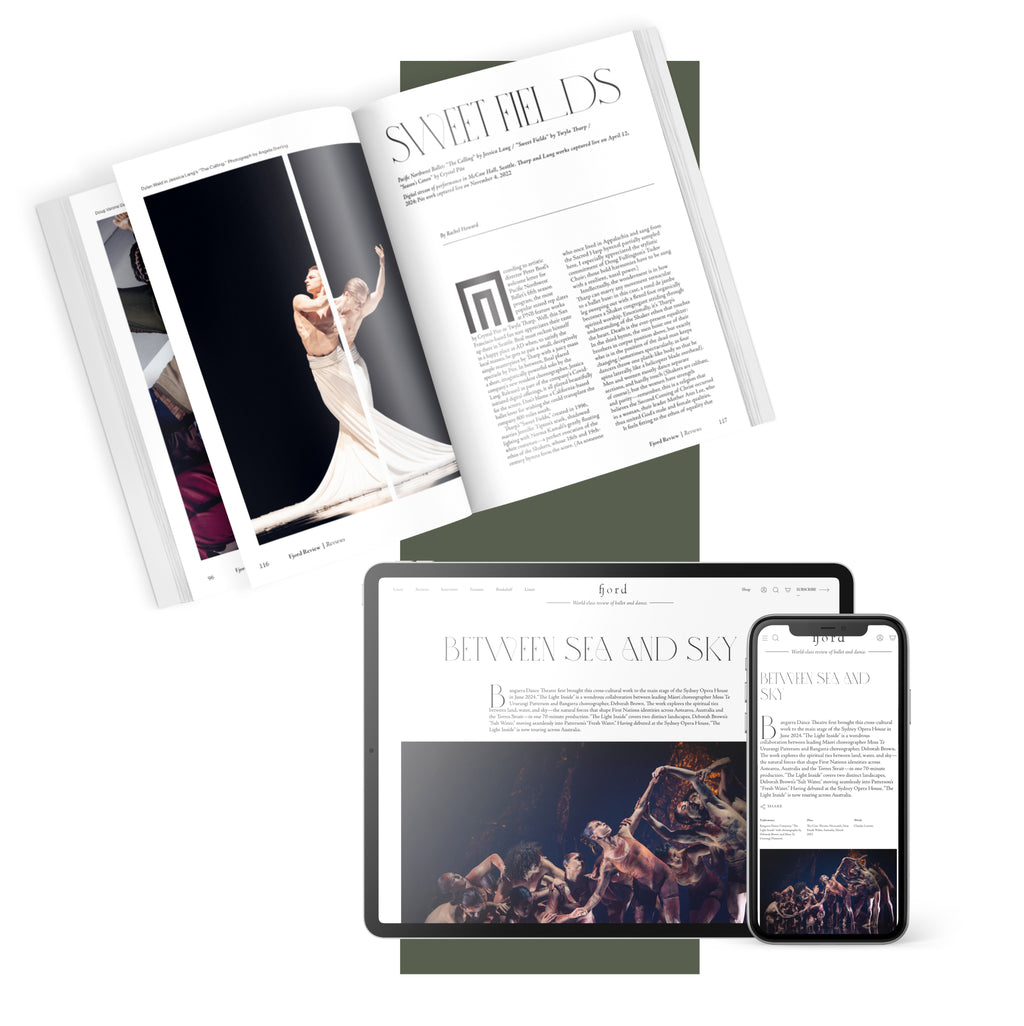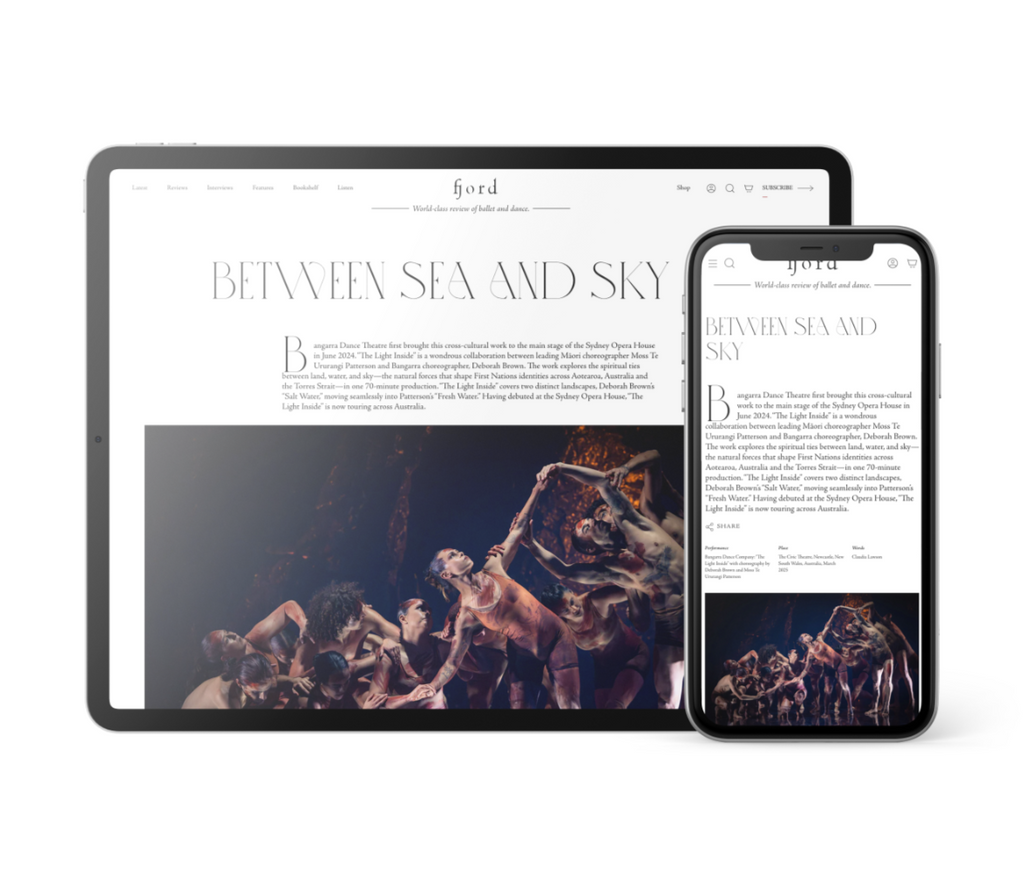It's a treat to watch the group of five collaborators and improvisors riff alongside Miller as they flow from duos to trios and other clusters. These early to mid-career dancers bring impressive experience—their bios are filled with such credits as Urban Bush Women, David Dorfman, Stephen Petronio, Bill T. Jones, and Trisha Brown. Each brings a unique energy profile to this project: serpentine clarity in the case of Jasmine Hearn; Bria Bacon’s fierce commitment. Stacy Matthew Spence skitters between two clusters of dancers, herding them with a kind of bumping action. When Chloe London broadens the span of her arms in an arabesque, it’s as if she’s holding signal flags. When Miller takes a solo, it’s as if she is performing a duet with her younger self—the full impact of her inspirational career made visible.
The evening slides in and out of lecture dem mode as Miller chats with the audience, notecards in hand, telling us what she was thinking as she performed in 1982—the floor was surprisingly slippery, she was wearing jazz shoes. And there’s an overly literal moment when the five dancers cluster in one corner to watch young Bebe on video, and then take up her moves the way dancers pick up phrases in class. Miller approaches them with her laptop screen open so they can have a closer look.
Percussionist Hearn Gadbois rubs the surface of a shallow drum as Spence enters, his right hand flapping like a bird, then both hands. Then his right foot joins in as he mimics the sound of the drum, angular, alert. A trio of Spence, Hearn, and Bacon move in unison. They walk, sit into a hip, break into a run, bending, turning, stumbling. When hopping on one leg, a dancer butts her head to Spence’s chest; he scoops her up with his jutted hip as she slides to the floor. Shayla Vie Jenkins follows this with a spectacular frenetic solo, spiraling and spinning around herself as the stage lighting goes red and the drum speeds up.











comments